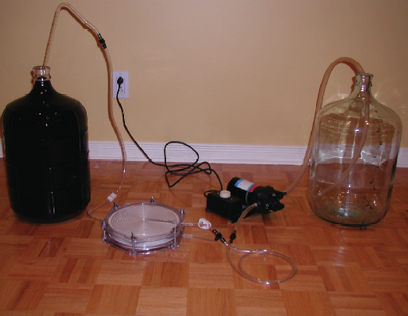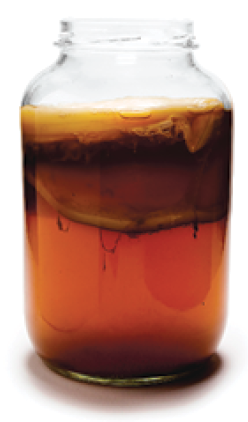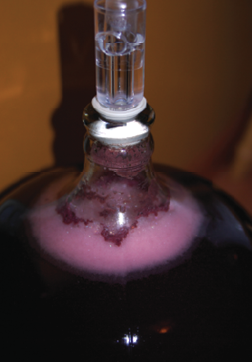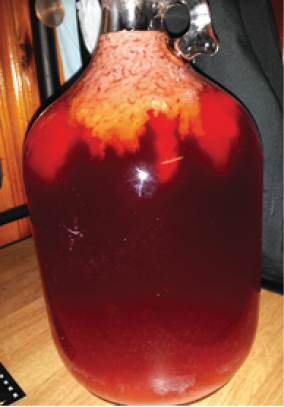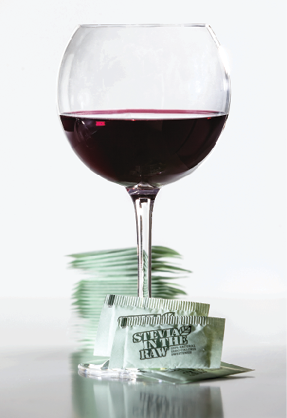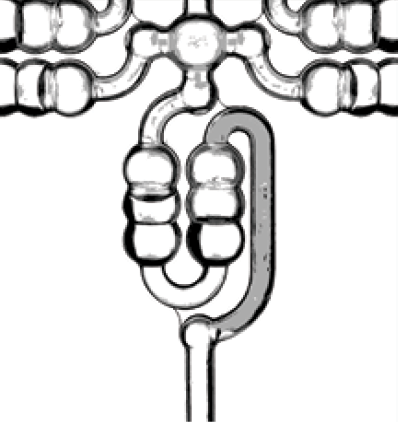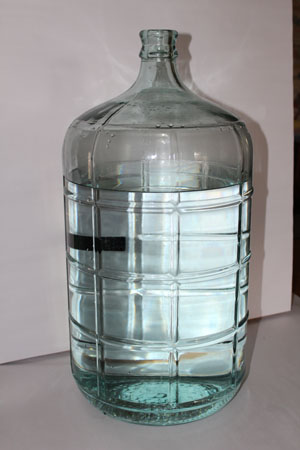Writer: Alison Crowe
Harvesting Decision Making
That is indeed a situation I face every year and is part of the delicate dance of being a winemaker. As many of my readers know, I believe that picking is the
Fun With Filtration, When To Harvest, and Transporting Wine
. . . a lot of sediment we find in wines actually forms after the wine is bottled, and is nothing that filtration can control.
Growing Grapes In Albuquerque
I’m thrilled for your new move because Albuquerque is just about as far north in New Mexico as you want to be planting traditional wine grapes of Vitis vinifera. Many grape types
Sluggish Fermentation Woes
Hmmm, it sounds like you’ve got a little bit of sugar left there. I would start, however, with a quick check of your numbers to be sure. A °Brix of -1.0 (0.995
Hangover Myths Revealed
I just read the article you refer to, which seems to claim that “natural wine” (an ill-defined term, which in the article seems to mean “minimal sulfites added except at bottling” or
Brett in the Winery, Hangover Myths, and Grapes In Albuquerque
Brettanomyces is often an ambient microbe in the air we breathe, but that’s no reason to go inviting concentrated and healthy stocks of it into your cellar.
Cooking With Wine
Making a red wine reduction is a great way to create a concentrated, flavorful sauce! I do it frequently myself when I’m cooking and it works great with red, white or sweet
Using Tartaric Acid
I absolutely recommend that you bring your TA up and your pH down after MLF is complete. This is best accomplished by tartaric acid, because wine bacteria will not consume tartaric acid;
Stuck Fermentations, Using Tartaric Acid, and Cooking With Wine
I find that when sugar is that low, the process of re-starting actually lowers the overall quality and you’re better off bottling slightly sweet (sterile filtered).
Hybrid Grapes Winemaking
Good for you for planting a nice selection of grapes! You’re absolutely right, that with Utah’s higher latitude, often-high altitude, and warmer summers, you get a bit more extreme growing season than
Over-Sulfited Wine
Oh boy, oh boy, oh boy. Sounds like you have a lot of sulfur dioxide in that wine! Assuming standard FSO2 for bottled wine being around 25 ppm, am I correct in
Free SO2 Levels
It seems that you and Craig are going through many of the same issues (see this question and answer). Like I mentioned to Craig, it’s really impossible to add enough sulfur dioxide
“Fruit Floaties”, Sweetening Wine, Free SO2 levels
Because sulfur dioxide is so easily-oxidizable, hydrogen peroxide naturally ‘finds’ the easily-oxidized SO2 and the two hopefully cancel each other out.
Stuck Fermentations
Before you start going crazy with a fermentation restart protocol, are you sure that it is really stuck? The first thing that I would advise you to do is to taste and
Pomace Compost
Pomace, which is the skins, seeds and stems leftover from wine processing and pressing, can indeed be returned to the field as a soil amendment. You deposit it in a thin layer
Alternative Sweeteners, Pomace Compost, and Stuck Fermentations
If you add some kind of sweetener that is fermentable (table sugar, grape concentrate, maple syrup, honey, etc.) you risk an uncontrolled re-fermentation in the bottle, which is never fun.
Ring Around The Carboy
The short story — and the good news — is that no one will get sick from this batch because no human pathogen can survive in wine. Alcohol and acidity will kill
Empty Airlocks, Calculating ABV, and Transplanting Vines
Most top-scoring red wines made in the U.S. are bottled after 18–24 months in barrel.
Transplanting Vines
Depending on the age of the grapevine, and it sounds like it could still be young since you say it’s “small,” it is indeed possible to transplant grapevines. It takes a lot
Calculating ABV
This is a great question. Luckily the answer is simple. You still only calculate potential alcohol based on the original Brix reading. “Negative Brixes,” or when the density of your fermented solution
Why the Tiny Bubbles?
There are so many microbes that can produce tiny bubbles in new wines that perhaps your question should be, what microbes will not produce tiny bubbles in dry must? Everything from (of
Softened Water, High Alcohol Wine, and Tiny Bubbles
Water softeners add another wrinkle, namely because they tend to add a lot of sodium.
Adjusting Acid In An Aged Wine
You can absolutely adjust acidity in a wine when it is one year old. Though I often say that it’s best to do major adjustments early on in a wine’s life (since
Freezing Grape Must
If you have the freezer space I say freeze, freeze away! It’s actually somewhat common (for those grape producers who specialize in it like Brehm Vineyards, Vino Superiore, or Wine Grapes Direct)
Over-Sulfited My Wine
I’m not sure if in the above question you are referring to having over-added to grape juice or to finished wine. Regardless, adding 45 grams of potassium metabisulfite, which is about 58%
